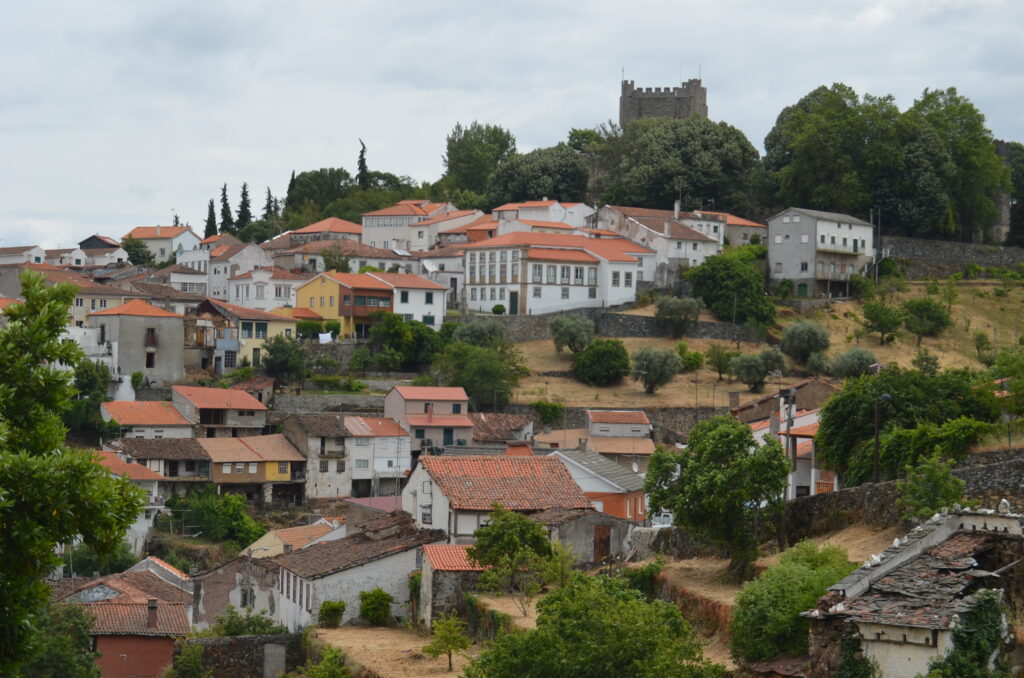
Let’s face it, exploring Bragança is an absolute must, even though it’s a destination often postponed due to perceived distance. From a distance, it miraculously comes closer, revealing the untapped tourist allure of the Municipality of Bragança, situated in the Northeast of Portugal. Here, I present a curated itinerary for your journey through Bragança, featuring notable attractions, recommended accommodations in and around Bragança, culinary landmarks in local restaurants, and an interactive map to ensure you don’t miss a beat during your visit.
This northern Portuguese municipality, nestled in Trás-os-Montes, played a pivotal role in safeguarding the Portuguese border, carrying a historically significant legacy in the nation’s formation. Various civilizations, including Celts, Romans, and Arabs, once occupied this land, and even neighboring Castile coveted this piece of Transmontana Cold Land. Its strategic importance has been acknowledged since 1187, earning a special charter from Portuguese monarchs, and in 1464, it achieved city status.
Bragança’s district forms part of the UNESCO-recognized Transboundary Biosphere Reserve of the Iberian Plateau. The region boasts a natural heritage of rare beauty and diversity, encompassing two natural parks within its boundaries: the lush mountain vegetation in Montesinho Natural Park and the majestic cliffs of the river canyon in the International Douro Natural Park. Additionally, the Terras de Cavaleiros Geopark showcases rock formations unique in the world, and a significant portion of the Regional Natural Park of the Tua Valley contributes to the area’s natural splendor.
Given these remarkable features, it’s no surprise that the latest tourism promotion campaign proudly declares, “Naturally Bragança.” Beyond being a mere phrase, “naturally” perfectly encapsulates this remote region where inhabitants maintain an intimate and respectful relationship with nature, viewing it as sustenance, shelter, and inspiration.
The reality is this: Bragança is much closer than anticipated and stands as a compelling destination for a getaway, a cultural excursion, or even an extended vacation.
How to Get There
Bragança stands as the capital of the northeasternmost district of Portugal, forming, along with Vila Real, the Trás-os-Montes region in the North of Portugal. Positioned along the border, this borderland district shares boundaries with Spain to the north and east, specifically with the provinces of Ourense, Zamora, and Salamanca.
For those journeying by car, it is the preferred means of reaching Bragança. The primary and swiftest routes into the city are the A4 and IP2. It takes less than 5 hours to cover the approximately 500 km between Lisbon and Bragança. This is attributed to Bragança’s well-connected road infrastructure. From Porto, the 200 km separating the two cities can be covered in just over 2 hours. Bragança also enjoys a strategic location in proximity to major Spanish cities such as Zamora, Salamanca, and Madrid.
Traveling by bus is another option, with daily services to Bragança departing from major Portuguese cities. Although the journey is lengthy and time-consuming, it offers an economical solution for solo travelers.
It’s worth noting that Bragança does not have a train connection.
A Bit of History
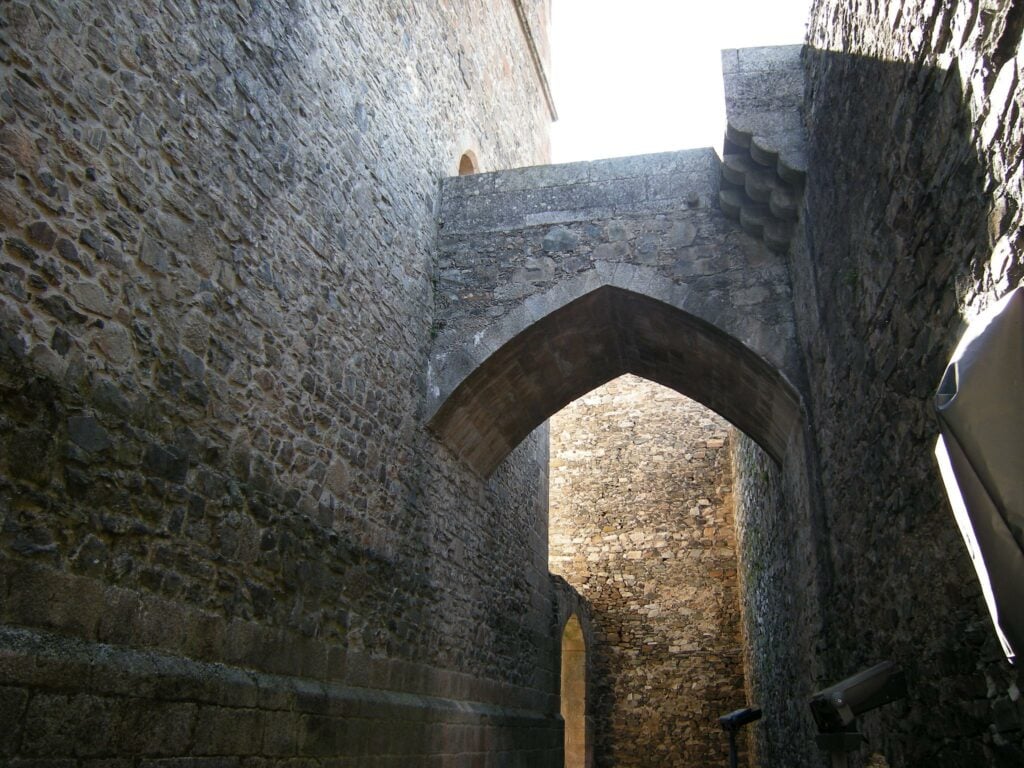
The history of Bragança traces back to ancient times, with evidence of human settlement in the region dating back to the pre-Roman era. The Celts, an ancient Indo-European people, were among the early inhabitants of this land. Their influence and cultural imprint have left a lasting legacy in the historical tapestry of Bragança. As different civilizations ebbed and flowed, the Celts played a crucial role in shaping the identity of the region.
With the rise of the Roman Empire, Bragança became part of the vast Roman territory. The Romans, known for their engineering prowess and strategic vision, recognized the geographical significance of Bragança. The region served as a crucial point in the defense of the northern frontier of the empire. The Roman presence left an indelible mark on the landscape, and remnants of their occupation can still be found in archaeological sites scattered throughout the area.
During the Moorish period in the Iberian Peninsula, Bragança witnessed cultural interactions and influences. The Moors, with their advanced knowledge in various fields, contributed to the development of agriculture, architecture, and arts in the region. The coexistence of different cultures during this time laid the foundation for the rich diversity that characterizes Bragança today.
As the Middle Ages unfolded, Bragança emerged as a key player in the defense of the Portuguese border against neighboring Castile. The strategic location of Bragança made it a focal point in the territorial disputes between the two kingdoms. In 1187, recognizing its strategic importance, Bragança was granted a special charter by Portuguese monarchs, solidifying its role as a fortified stronghold.
In 1464, Bragança reached a significant milestone when it was elevated to city status. This period marked a Renaissance influence, bringing advancements in arts, architecture, and governance. The city’s skyline began to evolve with the construction of notable landmarks, reflecting the prosperity and cultural vibrancy of Bragança during this era.
As Portugal entered the modern era, Bragança continued to evolve. In contemporary times, Bragança gained international recognition with its inclusion in the UNESCO-recognized Transboundary Biosphere Reserve of the Iberian Plateau. This acknowledgment underscores the city’s commitment to preserving its natural and cultural heritage.
When to Visit
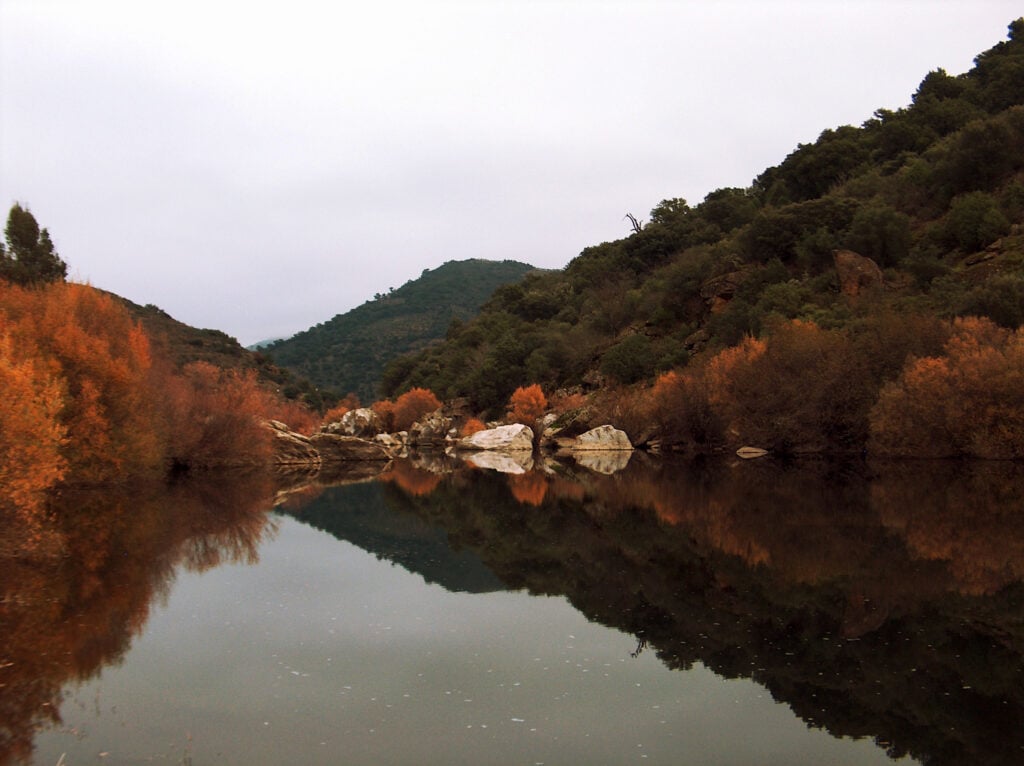
The optimal time to visit Bragança hinges on individual preferences and interests. If your aim is to delve into the rich historical and cultural heritage while savoring regional gastronomy, any season is perfect.
In the local Transmontano vernacular, the phrase “nine months of winter and three of hell” is commonly used to describe the climate of the Cold Lands and Transmontano plateaus prevailing in the Bragança district. It’s true that the region is renowned (and thrives) for its prolonged cold winters and short, hot summers.
Temperatures are milder in late spring and early autumn, making these times ideal for leisurely walks.
In spring, rain and thaw fill rivers, streams, and brooks that run wild. The rolling hills are adorned with floral hues dominated by cistus, broom, heather, and more. Almond trees in bloom, from March to April, create a rare spectacle, blanketing the territory in a white cloak, distinct from the winter snow that makes the city glisten.
Autumn brings the long-awaited freshness after hot summer days, which can be unforgiving here. The landscape is painted in enchanting warm autumnal tones: stubble fields turn rural landscapes to gold, plowed earth presents a complete palette of reddish hues, alder trees trace yellow lines along watercourses, oranges, browns, and Bordeaux dominate vineyards and adorn oaks, the golden foliage of beech trees…
Amidst the two distinct intense greens of chestnut trees, extending as far as the eye can see: the dark green of the foliage and the light green of chestnut husks. With the falling leaves, nature “weaves” plush carpets of multicolored foliage, inviting one to roll around.
Low temperatures don’t deter the locals, known as brigantinos, from celebrating the cycle of life and nature, a central theme in their most distinctive traditions and customs. In fact, a variety of popular and cultural events fill the Winter Festivals (usually from November to February/March), perhaps unknown to most Portuguese but lived more intensely by the locals.
Make a note of these dates in your calendar if you plan to visit Bragança during one of its most significant events:
Bragança Festival (August): The peak time to visit Bragança is in the summer when days are long and the events calendar is brimming with festivals and activities. The highlight is undoubtedly the Festas de Bragança, dedicated to the patron saint, Nossa Senhora das Graças, culminating on the municipal holiday of August 22.
December/January: From Saint Stephen’s Day to Epiphany, there is no lull in the villages of Bragança during the Festas dos Rapazes. After all, the Caretos don’t only hit the streets during Carnival. Each village has its ancient traditions to celebrate the winter solstice, whose origins are lost in memory but intertwine Celtic solstice rites, Zoelas customs, juvenile revelry, and Roman calends.
Burning of the Devil (Carnival): Carnival is always an excellent time to visit Bragança and its surroundings. On the Saturday before Carnival, the city streets fill with Caretos from neighboring villages, and even from León and Zamora. Adorned in their traditional costumes and reviving ancient customs, they run, jump, jingle, and play through the streets, culminating at Bragança Castle with the Burning of the Devil. In the following days, until Ash Wednesday, you can catch them in their respective villages.
Deer Rut Season (September and October): Okay, it’s not a festival, but it’s an experience, and nature enthusiasts appreciate the unique spectacle of the Red Deer Rut (mating season). With some luck, you can hear a dozen males from the red deer population of the Montesinho Natural Park bellowing loudly to attract females.
November: As the harvest season concludes, attention turns to numerous markets and fairs, chestnut-themed festivals and gatherings (a fundamental product in Trás-os-Montes), and mycological routes (for those eager to learn more about wild mushrooms).
What to See
Now it’s time to dive in and embark on an enchanting journey through Bragança, where history unfolds amidst architectural wonders, revealing the city’s rich tapestry. The Historical Center, a relatively compact area, beckons exploration on foot, offering three essential nuclei for first-time visitors: the Bragança Castle and Citadel, Museums Street, and Sé Square.
Bragança’s Historical Center
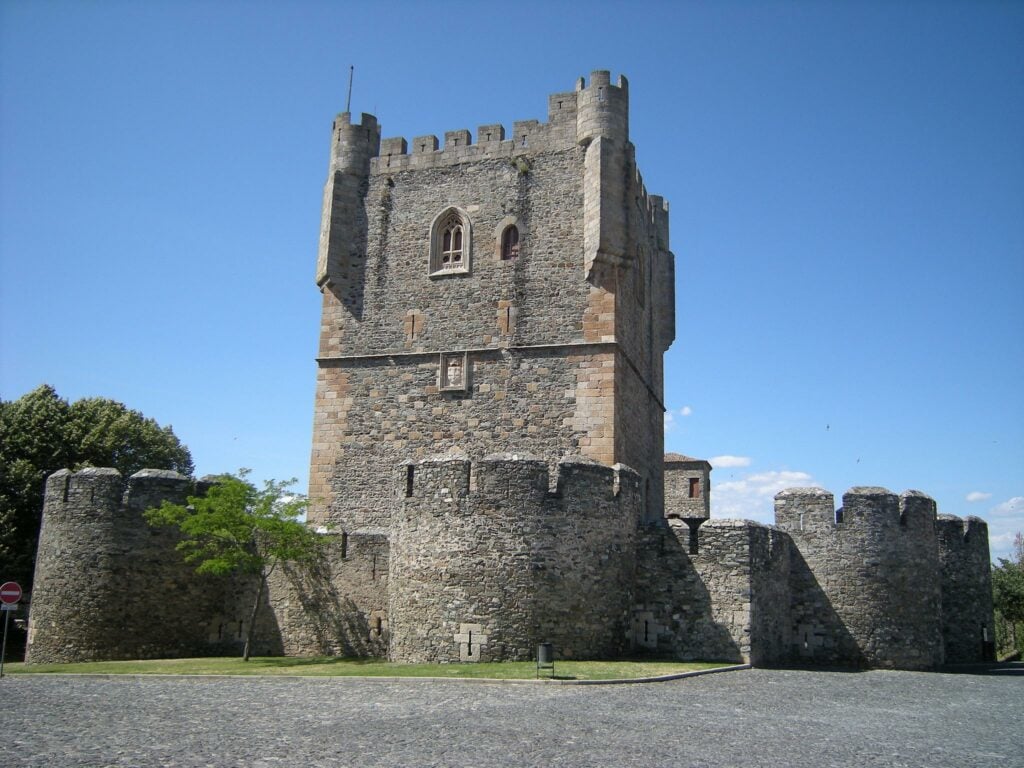
Bragança, a city with heart, symbolized by the embracing walls of Bragança Castle around its oldest and still thriving borough, the Citadel. Your journey begins here, at the elevated part of the city. Whether entering through the Sun Gate (east) or the Village Gate (west), the Castle Square is sure to leave you in awe. Bragança Castle, one of Portugal’s most beautifully preserved castles with stunning Gothic windows, stands tall. Explore the 15th-century Keep, housing the distinguished Military Museum of Bragança. Immerse yourself in fantasy at the legendary Princess Tower and ascend one of the turrets for breathtaking views of Bragança and its surroundings.
Discover other must-see attractions within the Citadel, including the Church of Santa Maria (or Nossa Senhora do Sardão), the oldest originally Romanesque church in Bragança, now adorned with Baroque and Renaissance elements revealing astonishing three-dimensional paintings. Adjacent to it, find the enigmatic Domus Municipalis, a unique pentagonal Romanesque building, believed to be a meeting place for the “good men,” some of whom convened in secrecy.
Explore the Iberian Mask and Costume Museum within the Citadel, a captivating collection of traditional Caretos masks. Stroll along the castle walls, unraveling more charms of the Citadel, such as the medieval Pillory mounted on a boar, a zoomorphic representation of a carved granite sow, bearing witness to the city’s Celtic origins. Lose yourself in narrow, cobbled streets, ancient and full of character, lined with picturesque houses that seem to have forgotten the passage of time.
Outside the walls, take time to wander through the Castle Garden, and discover the Queen’s Fountain, and the Chapel of Our Lady of Health. Marvel at the aesthetic beauty of the Mudéjar ceiling in the Church of São Bento and the mannerist facade of the Convent and Church of São Francisco, significant on the pilgrims’ route to Santiago de Compostela, where recent discoveries unveiled medieval frescoes.
Museum Street
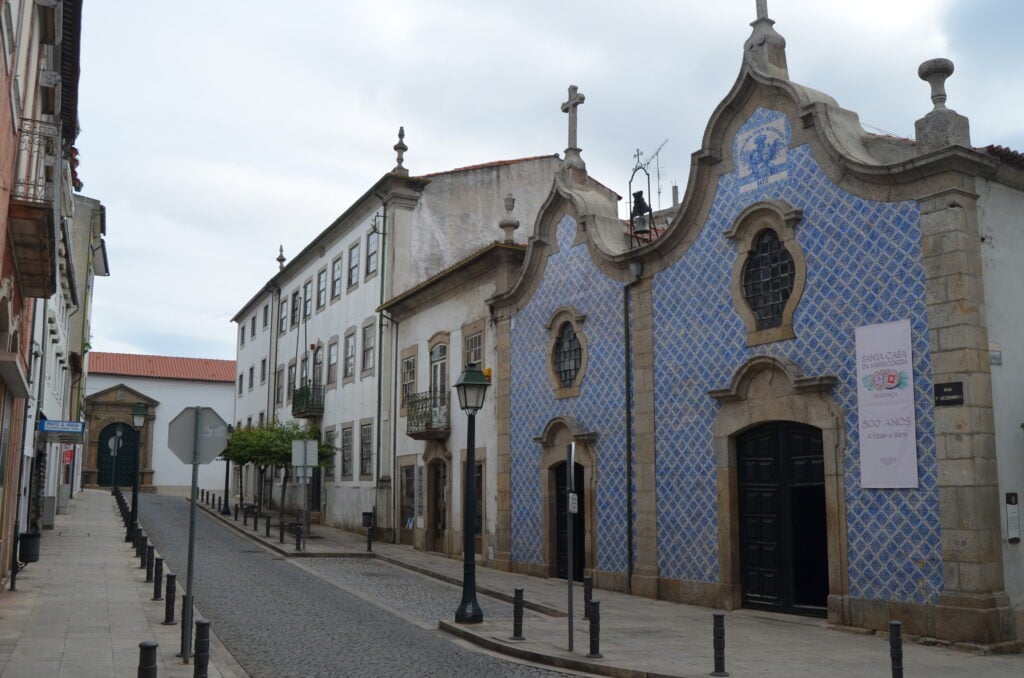
Continue your exploration, descending to Museum Street, officially Abílio Beça Street. In just 500 meters, encounter five noteworthy museums, attracting history, archaeology, ethnography, and art enthusiasts: the Abade de Baçal Museum, the Graça Morais Contemporary Art Center, the Georges Dussaud Photography Center, the Bragança Sephardic Memorial and Documentation Center, and the Northeast Transmontano Sephardic Culture Interpretation Center.
As you stroll down Museum Street, explore the Churches of São Vicente, Mercy, and Santa Clara in the former convent, where the patroness of Bragança, Our Lady of Grace, is venerated.
Main Square
No Bragança itinerary is complete without a visit to the Sé, in the main square, a spacious and airy square centered around a cross, presided over by the Old Cathedral of Bragança. Dating back to the 16th century, the Old Cathedral was initially intended as a convent for the Clarisse nuns. Eventually handed over to the Jesuits, it became one of the most prestigious colleges in the region. In 1764, the episcopal seat was transferred from Miranda do Douro to Bragança, and the convent complex and church, dedicated to Saint John the Baptist and the Holy Name of Jesus, became the diocesan cathedral. Set aside time to explore the church; it is well worth it!
The remaining architectural complex of the convent was renovated in 2004 by the municipality, transforming it into the Municipal Cultural Center Adriano Moreira, the Municipal Library, the Adriano Moreira Library, the Trás-os-Montes Academy of Letters, the Music Conservatory, exhibition halls, and a city memory space. Most cultural spaces are accessible through Camões Square, a vast square used for major city events and the location of the old market.
The Unseen Bragança
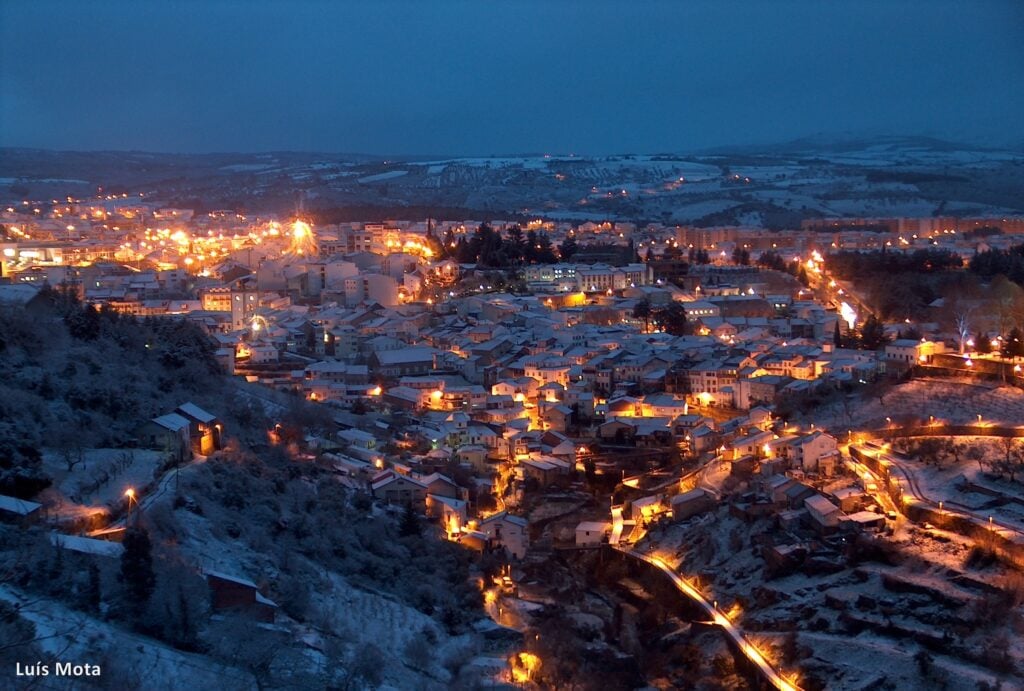
Bragança’s charm extends beyond its architectural heritage and historical and cultural landmarks. A visit to Bragança becomes truly fulfilling when leisurely strolling through its streets, alleys, and squares, appreciating the details and facades of old buildings—some humble, others opulent.
These wanderings unveil hidden gems like the Green Corridor, a sequence of boardwalks flanking the Fervença River (applauded for its riverbank restaurant scene) leading to the Bragança Science Center, Casa da Seda, the viewpoint of the Chapel of Our Lady of Pity, and the lush Urban Park.
In line with the city’s ecological consciousness, emphasizing green space beautification, there’s also a commitment to street art. Drawing inspiration from the region’s identity, Bragança is making its mark on the international street art map. From remarkable murals and installations by globally recognized artists like Bordalo II (whose “Chameleon,” “Genet,” and “Wild Boar” adorn the streets), to subtle decorative motifs with messages, Bragança is earning a spot in the global street art scene.
Challenge yourself to see Bragança with fresh eyes after exploring the vibrant heart of the city. Change your perspective and take in the marvelous views of the city, castle, walled citadel, and colorful houses from the São Bartolomeu Sanctuary Overlook. It’s the perfect vantage point to bid farewell to this “beautiful Transmontana,” whose enchantment captivates like a spell, leaving a desire to return.
Around Bragança
Explore the wealth of the Transmontana region, where Bragança stands as a testament to secular honors and royal favor for its role in the nation’s construction. This journey goes beyond the city’s invaluable heritage, encompassing two additional treasures: the people of Bragança and the natural heritage.
Montesinho Natural Park
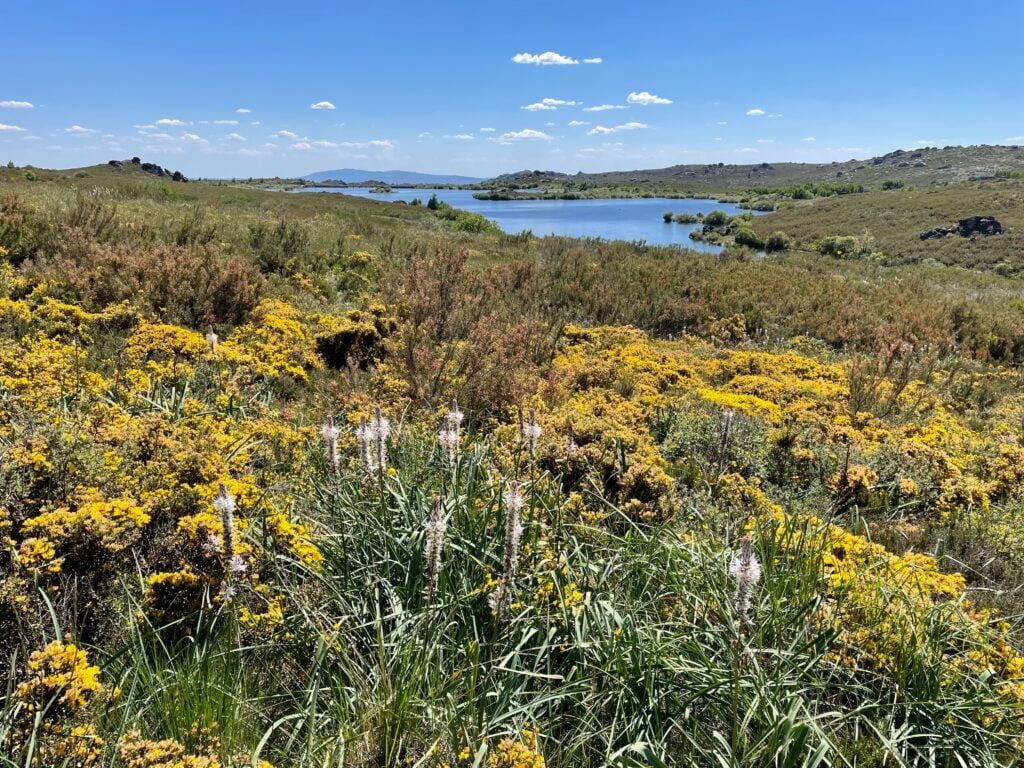
The lush green expanse of the undulating Montesinho Natural Park awaits just beyond Bragança’s gates. Enhance your Bragança itinerary by immersing yourself in pure, untouched, and wild nature. A significant portion of Portugal’s terrestrial fauna, including the Iberian Wolf and Red Deer, finds sanctuary here. September and October bring the fascinating (and spine-chilling) experience of hearing the Red Deer’s Roar, one of the planet’s unique mating calls. Montesinho’s beauty was even visited by a Cantabrian Brown Bear in 2019. Who knows, maybe the next visit will bring a friend to settle in Portugal.
The green palette adorning Montesinho’s mountains is dominated by oak groves, cork oak forests, and chestnut groves (Bragança is the largest chestnut producer in Portugal). The trail opportunities are virtually infinite and surprising. Idyllic waterfalls and river beaches provide refreshing spots after hikes. If walking isn’t your forte, embark on a 4×4 adventure to explore the natural sanctuary that is Montesinho Natural Park.
Rio de Onor
One of the 7 Wonders of Portugal Villages, Rio de Onor is a village literally traversed by the invisible line of the border with Spain and the river it shares its name with. Nestled in Montesinho Natural Park, the village seamlessly integrates into the landscape of this remote Trás-os-Montes, where its greatest heritage is its people. The rhythmic dialect of Rio de Onor still resonates from the flowery balconies of the typical shale houses. Twin sisters, Rio de Onor and Rihonor de Castilla, form a single community with fifty Portuguese and Spanish residents, maintaining the true spirit of communal life, akin to a family. Beautiful and captivating, Rio de Onor rightfully secures a place on our list of the most beautiful villages in Portugal.
Gimonde
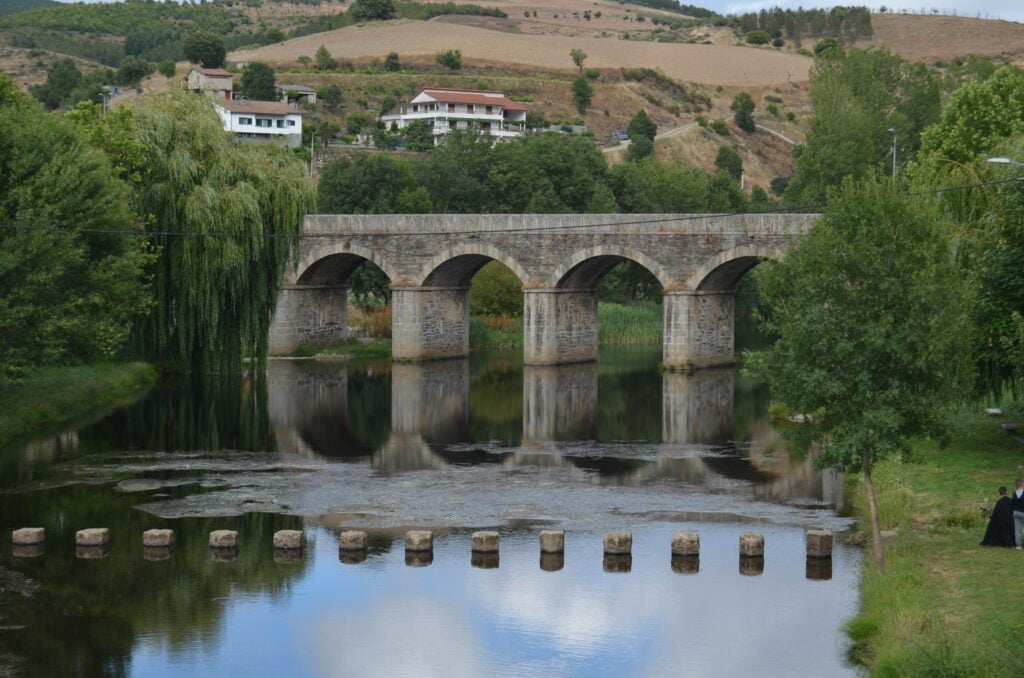
Gimonde is a must-stop village in any Bragança itinerary, renowned for its gastronomic delights. Beyond the excellence of Mirandese Steak and the quality of Porco Bísaro smoked products, there’s a rural charm that captivates everyone. This charm emanates from the typical shale houses, the towering church, life set to the rhythm of the countryside, and the rivers that traverse it—the Igrejas River and the Sabor River. With bridges crossing them—the old shale bridge, the new granite bridge, and stepping stones that we can’t resist hopping across (one day we might misjudge the distance and impulse and end up in the water).
Montesinho Village
The mountain village of Montesinho lends its name to the natural park in its heart. Invisible until the last moment, those arriving by road are surprised by a vibrant, colorful, beautiful, and lively shale village, especially when visitors fill the two squares in front of the village cafes. Recognizing its tourism potential, the village underwent revitalization, offering astonishing Rural Tourism accommodations for a village of this size—a perfect refuge from urban hustle and bustle.
Monastery of Castro de Avelãs
A mere 5 km west of Bragança lies what could be Portugal’s sole example of Mudéjar Romanesque architecture—the Monastery of Castro de Avelãs. The church’s brick masonry apse, likely predating the 12th century, still stands.
Outeiro
Passersby on the road would never suspect that this unassuming village harbors one of Portugal’s greatest treasures of religious architecture—not a church but a basilica. The only village basilica in Portugal belongs to the municipality of Bragança and more than deserves a visit. After marveling at the Basilica of Santo Cristo do Outeiro, wander through the village’s streets and squares, ascending to the hilltop where remnants of the Outeiro Castle, like an imperfect crown, still remain.
Where to Eat
From traditional dishes to innovative creations, these dining establishments promise a delightful experience for every palate.
Taberna do Javali
Nestled within the citadel of Bragança Castle, Taberna do Javali offers a refreshing and intriguing culinary experience. Whether you opt for tapas or a full meal, the enticing names on the menu are surpassed only by the flavorful dishes. Named after the wild boar, the restaurant crafts succulent boar steaks and burgers that stand out. While the wait time might test your patience, every dish is prepared on the spot, ensuring a slow but rewarding service. Take your time, savor the moment, and indulge in the innovative offerings that continually emerge from the kitchen.
Specialties:
- Crispy chicken strips with spicy sauce
- Ham with tomatoes
- Chouriça sausage
- Game burger
- Wild boar steak sandwich
- Wild boar loin
- Pork loin
- Veal loin
- Transmontana salad
- Ham and avocado risotto
- Mixed sweets
- Chestnut tart
- Chickpea tart
- Lemon mousse
- White chocolate
Restaurante O Careto
Situated in the heart of Varge village, Restaurante O Careto pays homage to traditional Transmontana gastronomy in a meticulously crafted rustic setting. Amidst the acclaimed Mirandese steaks and chops, discover age-old flavors that almost slipped through time. Indulge in generous servings of grilled cod with mashed potatoes, and a surprising open-grilled conger eel. Delight in tastes of yesteryear, such as the homemade Potted Iron Pot Rooster.
Specialties:
- Cheese, ham, and chouriço appetizers
- Grilled cod with mashed potatoes
- Open-grilled conger eel
- Veal steak
- Veal chop
- Homemade Potted Iron Pot Rooster (available by reservation)
- Cheese with pumpkin jam
- Cheese with cherry jam
- Egg custard
Restaurante O Abel
A must-stop in the village of Gimonde, Restaurante O Abel beckons with over thirty years of dedication to authentic regional flavors and traditional dishes. From a humble tapas joint, it transformed into a renowned restaurant, witnessing its space expand as the clientele multiplied. Despite the transition from “tripe with beans in a bowl” to the finest grilled Transmontana meats, the family atmosphere has remained unchanged. Abel’s Steak has no rival, and the secret lies in the sauce infused with local aromatic herbs, bringing the essence of the region to the palate. Arrive hungry and early, as reservations are not accepted, and you might have to wait your turn.
Specialties:
- Regional smoked sausage, ham, and grilled chouriço
- Sheep cheese
- Abel’s Steak
- Veal Chop
- Rodeão (beef cut)
- Lamb
- Picantone (grilled chicken)
- Grilled cod with olive oil
- Chestnut pudding
- Cheese pudding
- Chocolate mousse
- Caramelized pumpkin
Solar Bragançano
Reserved in advance yet unreserved in the art of hospitality and culinary excellence, Solar Bragançano, located in Praça da Sé, is an embodiment of nobility. The true aristocracy lies not only in the garden, salons, fine woods, and decor but in the kitchen, elevating game, meat, and fish dishes to unparalleled heights. The menu, a seductive poem to the palate, features carefully selected wines and a culinary experience that is nothing short of captivating.
Specialties:
- Regional smoked sausage
- Fried trout
- Mushrooms
- Ham, cheeses
- Trout with ham sauce
- Solar’s grilled cod
- Sole
- Sea bass
- Congo fish
- Solar’s Veal steak
- Mirandese Veal Sirloin
- Montesinho Kid
- Canhono Mirandês (lamb)
- Partridge, Pheasant, Wild boar, Deer, Hare
- Golden pumpkin
- Burnt custard
- Cherry soup
Off We Go
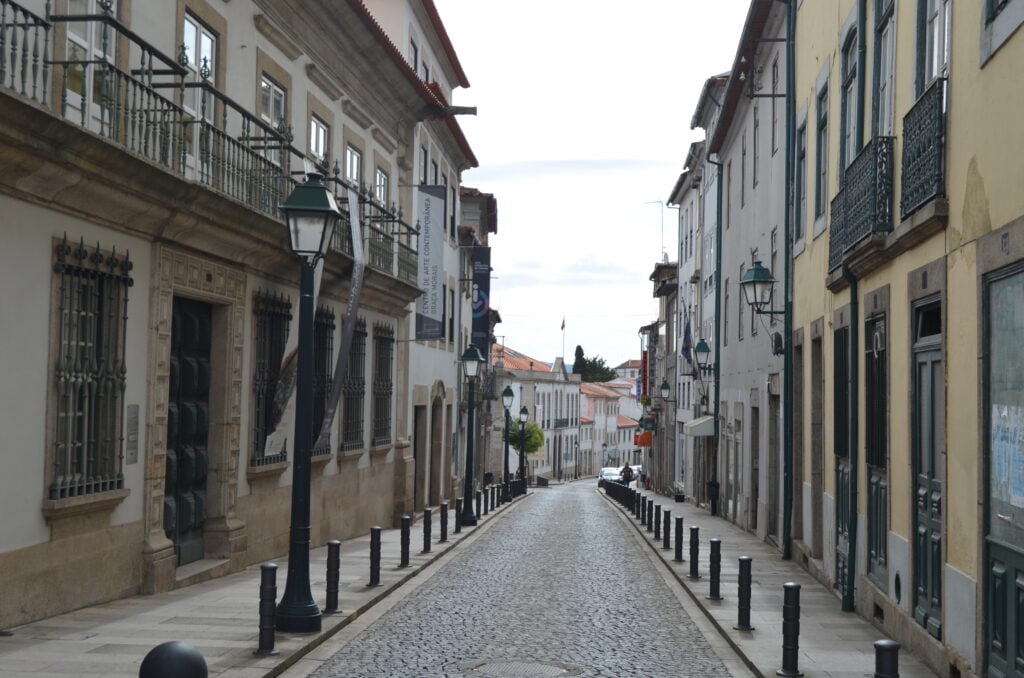
As you can see, the journey through Bragança unfolds as a captivating exploration of history, culture, and natural wonders. This northeastern Portuguese gem, with its rich historical tapestry dating back to ancient civilizations, stands as a testament to the resilience and strategic significance of the nation’s formation.
As you wander through the Historical Center of Bragança, the heart of this enchanting city, we are transported through time. The well-preserved Bragança Castle and Citadel, the intriguing Museums Street, and the serene Sé Square offer a glimpse into the diverse layers of Bragança’s past. The Unseen Bragança reveals hidden gems, from the Green Corridor along the Fervença River to the burgeoning street art scene, adding a contemporary flair to the city’s charm.
Venturing beyond Bragança’s boundaries, you’ll discover Montesinho Natural Park, a haven of biodiversity and tranquility. The villages of Rio de Onor, Gimonde, and Montesinho each contribute a unique flavor to the region, blending natural beauty with cultural richness. Culinary delights further enhance the Bragança experience, from traditional dishes to innovative creations, these establishments reflect the region’s gastronomic prowess.
Bragança is not just a destination; it’s an immersion into a world where history whispers through the cobblestone streets, nature beckons with open arms, and the warmth of the people adds a touch of genuine hospitality. Whether you come for the festivals, the Red Deer Rut, or the winter celebrations, Bragança invites you to discover its allure—”Naturally Bragança.” So, whether it’s a brief getaway, a cultural excursion, or an extended vacation, Bragança awaits, closer and more captivating than one might imagine.

